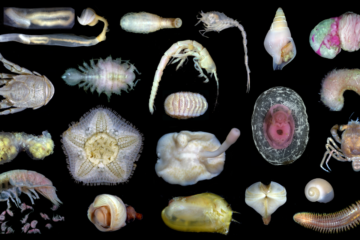 The University of Louisiana at Lafayette released this statement about our new paper out in Ecology.
The University of Louisiana at Lafayette released this statement about our new paper out in Ecology.
McClain, C. R., Boolukos, C. M., Bryant, S. R. D., & Hanks, G. (2023). Sunken trees in the deep sea link terrestrial and marine biodiversity. Ecology, e4168.
A study led by a University of Louisiana at Lafayette scientist has yielded significant insight into the role sunken wood plays in marine biodiversity, and ecological links between land and deep-sea environments.
Researchers determined that wood deposited on the Gulf of Mexico floor provided a vital food source for marine life and the foundation for diverse ecosystems in otherwise barren underwater landscapes. The study also shed light on how human activity on land can impact the delicate ecosystems of the deep oceans.
Findings of the study, which was funded by a $747,825 grant from the National Science Foundation, were published this month in the scientific journal Ecology. Dr. Craig McClain, a professor in UL Lafayette’s Department of Biology, is the article’s lead author.
“Our experiment demonstrates the crucial role that wood plays in sustaining deep-sea biodiversity. It’s awe-inspiring to witness the intricate life forms that rely on this terrestrial source for survival,” he explained.
As part of the study, researchers created wood falls in the Gulf of Mexico by dropping sections of trees from 11 species to the ocean floor. Scientists monitored 43 wood falls, which are sections of trees that sink to the seafloor.
Analysis of the sites over time – and wood samples retrieved from the seafloor – offered evidence of a rich tapestry of marine life that encompassed 114 invertebrate species spanning 10 phyla. Researchers traced the biodiversity to a range of variables, including the density, composition and size of wood.
Going forward, findings of the study will help to inform conservation efforts on land and at sea, McClain explained, and the importance of preserving land-based ecosystems for the well-being of the entire planet.
“This study not only broadens our understanding of deep-sea ecosystems but also underscores the intricate connection between tree biodiversity and biomass on land and the flourishing communities in the deep oceans,” McClain said.


